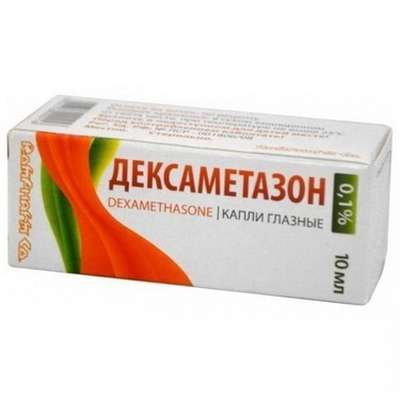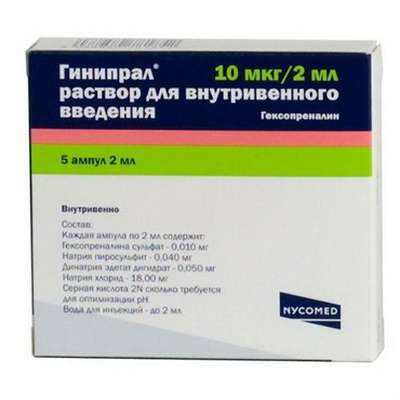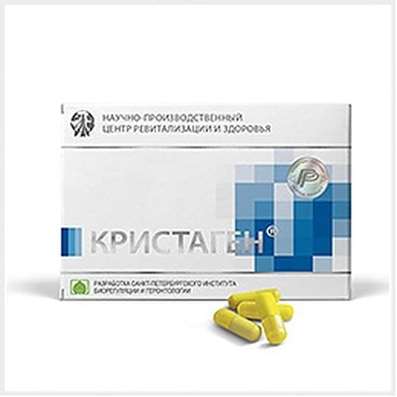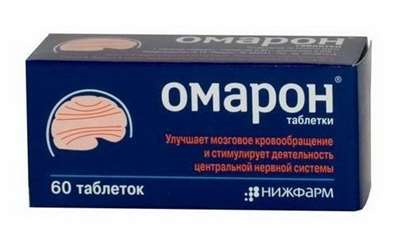Instruction for use: Detromb
I want this, give me price
Dosage form: film-coated tablets
Active substance: Clopidogrelum
ATX
B01AC04 Clopidogrel
Pharmacological groups
Antiaggregants
The nosological classification (ICD-10)
I21.9 Acute myocardial infarction, unspecified: Changes in left ventricle with myocardial infarction; Changes in the left atrium with myocardial infarction; Myocardial infarction; Myocardial infarction without Q wave; Myocardial infarction without signs of chronic heart failure; Myocardial infarction with unstable angina; Pirouette tachycardia with myocardial infarction
I23.8 Other current complications of acute myocardial infarction: Changes in the left ventricle with myocardial infarction; Changes in the left atrium with myocardial infarction
I24.9 Acute ischemic heart disease, unspecified: Coronary heart disease; Coronary insufficiency; Acute coronary insufficiency; Acute coronary syndrome
I63 Cerebral infarction: ischemic Stroke; Ischemic brain disease; Ischemic stroke; Ischemic stroke and its consequences; Ischemic cerebral stroke; Ischemic cerebrovascular accident; Ischemic brain damage; Ischemic brain damage; ischemic conditions; Cerebral ischemia; Acute hypoxia brain; Acute cerebral ischemia; Acute ischemic cerebrovascular accident; Acute cerebral infarction; Acute ischemic stroke; Acute period of ischemic stroke; Focal cerebral ischemia; Ischemic stroke; recurrent stroke; The syndrome of Morgagni-Adams-Stokes; Chronic cerebral ischemia; cerebrovascular stroke; embolic stroke; Ischemic brain damage
I69.3 Consequences of cerebral infarction: Ischemic stroke and its consequences; Post-stroke state; Postponed stroke
I73.9 Peripheral vascular disease, unspecified: angiospasm; Vasospasm / vasoconstriction; vasospastic disorders; Violation of venous microcirculation; Violation of circulation; Violation of peripheral blood circulation; Lack of peripheral blood circulation in the lower and upper limbs; Peripheral arterial occlusive disease; Peripheral arterial occlusive disease in stages III-IV on Fontaine; Peripheral vascular insufficiency; Peripheral vascular lesions; Peripheral vascular disorders; Peripheral circulatory disorder; spasm of artery; angiospasm; Functional peripheral arterial disease; Chronic occlusive disease; Chronic obliterating diseases of the lower limbs; Chronic arterial occlusive disease
I74 Embolism and arterial thrombosis: Thrombosis of effort (stress); Arterial thrombosis; Arteriothrombosis; Subacute and chronic arterial thrombosis; Subacute thrombosis of peripheral arteries; Postoperative thrombosis; Vascular thrombosis; Vascular embolism; Thrombosis of aortocoronary shunt; Arterial thrombosis; Thrombosis of arteries; Coronary artery thrombosis; Coronary thrombosis; Thrombosis of blood vessels; Thrombosis with ischemic stroke; Thrombosis with general surgical operations; Thrombosis in Oncology Operations; Vascular thrombosis; Thrombus formation in the postoperative period; Thrombotic complications; Thromboembolic diseases; Thromboembolic syndrome; Thromboembolic complication in the postoperative period; Thromboembolism of arteries; Partial vascular thrombosis; Embolism; Embolism of arteries
I77.1 arteriostenosis: Occlusive arterial disease; Peripheral arterial occlusive disease;Peripheral arterial occlusive disease in stages III-IV on Fontaine
Structure and Composition
Clopidogrel hydrogen sulfate 97.875 mg
(Equivalent to 75 mg of clopidogrel)
Auxiliary substances: sodium carboxymethyl starch, silicon colloidal dioxide, croscarmellose sodium, magnesium stearate, macrogol-6000, mannitol, MCC
Membrane film: water (removed during production), hypromellose, iron dye red oxide (E172), talc, titanium dioxide (E171)
In packs of contour mesh 7 or 10 pcs .; In a pack of cardboard 2 (7 pcs.) Or 3 (10 pcs.) Packages.
Description of dosage form
Round, double radius tablets, film-coated, pink color with a brownish tinge.
Pharmachologic effect
Mode of action - antiaggregational.
Pharmacodynamics
Clopidogrel selectively reduces the binding of adenosine diphosphate (ADP) to platelet receptors and the activation of glycoprotein IIb / IIIa receptors by ADP, thereby weakening platelet aggregation.
Reduces platelet aggregation, caused by other agonists, preventing their activation by released ADP. Irreversibly binds to ADP-receptors of platelets, which remain immune to stimulation of ADP during the life cycle (about 7 days).
Since the first day of drug administration, significant inhibition of platelet aggregation has been noted. The inhibitory effect on platelet aggregation is enhanced, and a stable condition is achieved after 3-7 days. At the same time, the level of suppression of aggregation under the action of a daily dose of 75 mg on average amounted to 40-60%.
Platelet aggregation and bleeding time return to baseline on average 5 days after cessation of treatment.
Pharmacokinetics
Absorption is high, the bioavailability is high, the concentration in the plasma is low and after 2 hours after administration it does not reach the measurement limit (0.025 μg / l). Clopidogrel and the main circulating metabolite are reversibly bound to blood plasma proteins (98% and 94%, respectively).
Metabolised in the liver. The main metabolite is an inactive derivative of carboxylic acid, Cmax, after taking repeated oral doses of 75 mg of the drug is about 3 mg / l and is achieved after 1 hour.
Clopidogrel is a precursor of the active substance. Its active metabolite, a thiol derivative, is formed by oxidizing clopidogrel to 2-oxo-clopidogrel and subsequent hydrolysis. The oxidative process is regulated primarily by cytochrome P4503A4 and 2B6 isoenzymes, and to a lesser extent - 1A1, 1A2 and 2C19. An active metabolite in plasma is not detected.
Excretion: by kidneys - 50%; Intestine - 46% (within 120 hours after administration). T1 / 2 of the main metabolite after a single and repeated administration - 8 h.
The concentration of the main metabolite in plasma after taking 75 mg / day is lower in patients with severe kidney disease (Cl creatinine 5-15 ml / min) compared with patients with moderate kidney disease (Cl creatinine 30 to 60 ml / min) and healthy Persons.
In patients with cirrhosis of the liver, taking a daily dose of 75 mg for 10 days was safe and well tolerated.
Cmax clopidogrel both after single dose administration and in the equilibrium state was significantly higher in patients with cirrhosis than in healthy individuals. However, the level of the main metabolite in the plasma, as well as the inhibitory effect on platelet aggregation, were comparable in both groups.
Indications for Detromb
Prevention of atherothrombotic complications in patients who underwent myocardial infarction, ischemic stroke, or with diagnosed peripheral artery occlusive disease;
Prevention of atherothrombotic events (in combination with acetylsalicylic acid) in patients with acute coronary syndrome:
- without ST segment elevation (unstable angina or myocardial infarction without Q wave), including patients who underwent stenting in percutaneous coronary intervention;
- c elevation of the ST segment (acute myocardial infarction) with drug treatment and the possibility of thrombolysis.
Contraindications
Hypersensitivity;
Severe hepatic impairment;
Acute bleeding (such as: peptic ulcer or intracranial hemorrhage);
pregnancy;
Lactation period;
Children's age till 18 years.
With caution: moderate hepatic and / or renal failure, trauma, preoperative condition.
Side effects
On the part of the hematopoiesis system: sometimes - leukopenia, a decrease in the number of neutrophils and eosinophilia, a decrease in the number of platelets; Very rarely thrombotic thrombocytopenic purpura (1 in 200 000 patients), severe thrombocytopenia (platelet count ≤30000 / μl), granulocytopenia, agranulocytosis, anemia and aplastic anemia, pancytopenia.
From the central nervous system and peripheral nervous system: sometimes - headache, dizziness, paresthesia; Rarely - vertigo; Very rarely - confusion, hallucinations.
From the digestive system: often - dyspepsia, diarrhea, abdominal pain; Sometimes - nausea, gastritis, flatulence, constipation, vomiting, peptic ulcer of the stomach and duodenum; Very rarely - colitis (including ulcerative or lymphocytic colitis), pancreatitis, taste changes, stomatitis; Hepatitis, acute liver failure, increased activity of hepatic enzymes.
From the coagulation system: most often - bleeding (in most cases - during the first month of treatment). There are several cases with a fatal outcome (intracranial, gastrointestinal and retroperitoneal bleeding); There are reports of severe cases of skin hemorrhages (purpura), musculoskeletal bleeding (hemarthrosis, hematoma), eye hemorrhages (conjunctival, ocular, retinal), nasal bleeding, hemoptysis, pulmonary hemorrhage, hematuria and bleeding from the operating wound; In patients who took clopidogrel simultaneously with acetylsalicylic acid or with acetylsalicylic acid and heparin, cases of severe bleeding were also noted.
Dermatological reactions: often - bruising; Sometimes - a rash and itching; Very rarely - bullous rash (erythema multiforme, Stevens-Johnson syndrome, toxic epidermal necrolysis), erythematous rash, eczema, flat lichen.
From the cardiovascular system: very rarely - vasculitis, arterial hypotension.
From the respiratory system: very rarely - bronchospasm, interstitial pneumonitis.
From the musculoskeletal system: very rarely - arthralgia, arthritis, myalgia.
From the side of the urinary system: very rarely - glomerulonephritis, an increase in the creatinine of the blood.
Allergic reactions: very rarely - angioedema, hives, anaphylactoid reactions, serum sickness.
Other: very rarely - increase in temperature.
Interaction
Strengthens the antiaggregant effect of acetylsalicylic acid, heparin, indirect anticoagulants, non-steroidal anti-inflammatory drugs, increases the risk of bleeding from the gastrointestinal tract. However, in patients with acute coronary syndrome without ST segment elevation, long-term combined use of clopidogrel and acetylsalicylic acid (up to 1 year) is recommended.
The appointment of glycoprotein IIb / IIIa inhibitors together with clopidogrel requires caution in patients who have an increased risk of bleeding (with trauma and surgical interventions or other pathological conditions).
There was no clinically significant pharmacodynamic interaction with clopidogrel in combination with atenolol, nifedipine, phenobarbital, cimetidine, estrogens, digoxin, theophylline, phenytoin, tolbutamide and antacid agents.
Dosing and Administration
Inside, adults 75 mg once a day, regardless of food intake. Treatment should begin within a few days to 35 days - in patients after myocardial infarction and from 7 days to 6 months - in patients after ischemic stroke.
In acute coronary syndrome without ST segment elevation (unstable angina, myocardial infarction without Q wave), treatment should be started with a single 300 mg loading dose and then continued with a 75 mg dose once daily (in combination with acetylsalicylic acid in Doses of 75-325 mg / day). Since the use of higher doses of acetylsalicylic acid is associated with a greater risk of bleeding, the recommended dose of acetylsalicylic acid does not exceed 100 mg.
The maximum favorable effect is observed by the third month of treatment. The course of treatment is up to 1 year.
In acute coronary syndrome with ST segment elevation (acute myocardial infarction with ST-segment elevation), the drug is administered once in a dose of 75 mg once a day with the initial single dose loading in combination with or without acetylsalicylic acid and thrombolytic.
Combination therapy begins as soon as possible after the onset of symptoms and lasts for at least 4 weeks.
In patients older than 75 years, treatment with clopidogrel should begin without taking its loading dose.
Overdose
Symptoms: an overdose of clopidogrel may lead to lengthening of bleeding time and subsequent complications. If a bleeding is detected, appropriate treatment should be applied.
Treatment: the antidote of clopidogrel was not detected. If rapid correction of prolonged bleeding time is necessary, transfusion of platelet mass is recommended.
Precautionary measures
In the treatment of clopidogrel, especially during the first weeks of treatment and / or after invasive cardiac procedures / surgical intervention, careful monitoring of patients should be conducted to exclude signs of bleeding, including latent. In connection with the risk of bleeding and hematologic adverse effects (see "Side Effects"), if clinical symptoms that are suspect for bleeding occur during treatment, it is urgent to do a clinical blood test, determine activated partial thromboplastin time, platelet count, Activity of thrombocytes and conduct other necessary studies.
Clopidogrel, as well as other antiplatelet drugs, should be used with caution in patients who have an increased risk of bleeding due to trauma, surgery or other pathological conditions, as well as in patients receiving acetylsalicylic acid, nonsteroidal anti-inflammatory drugs, incl. Inhibitors of COX-2, heparin or inhibitors of glycoprotein IIb / IIIa.
Joint use of clopidogrel with warfarin may increase the intensity of bleeding (see "Interaction"), therefore, with the exception of special rare clinical situations (such as the presence of a floating thrombus in the left ventricle, stenting in patients with atrial fibrillation), the combined use of clopidogrel and warfarin is not recommended.
Clopidogrel prolongs bleeding time and should be used with caution in patients with diseases predisposing to the development of bleeding (especially gastrointestinal and intraocular).
Very rarely, after the use of clopidogrel (sometimes even briefly), there have been cases of thrombotic thrombocytopenic purpura (TTP), which is characterized by thrombocytopenia and microangiopathic hemolytic anemia, accompanied by neurological disorders, impaired renal function and fever. TTP is a potentially life-threatening condition requiring immediate treatment, including plasmapheresis. During the treatment it is necessary to monitor the functional activity of the liver. With severe liver damage, one should remember about the risk of hemorrhagic diathesis.
Taking clopidogrel is not recommended for an acute stroke less than 7 days old (because there are no data on its use in this condition).
Storage conditions of the drug Detromb
In dry, the dark place at a temperature of no higher than 25 ° C.
Keep out of the reach of children.
The shelf life of the drug Detromb
3 years.
Do not use beyond the expiration date printed on the package.

 Cart
Cart





